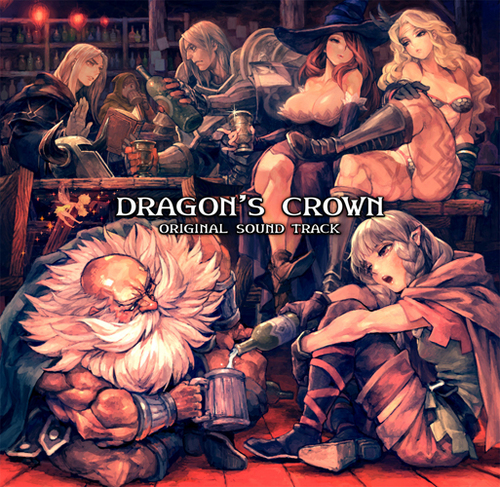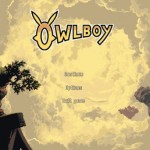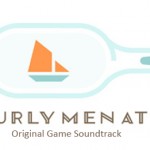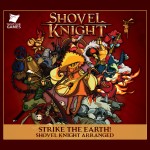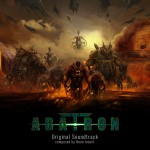Basiscape Records has just released the soundtrack to the PS3 game Dragon’s Crown, much to the delight of the game’s many fans. Dragon’s Crown features music composed by Hitoshi Sakimoto, and the soundtrack release has been some time in coming given that the game was originally released back in 2013. Though the game has had its share of controversy, it has a strong fan base and they are excited to finally see the music get an official release.
So how does this offering from Sakimoto hold up? Check out the review after the break.
Dragon’s Crown is a fantasy action adventure game in the style of the old beat-em-up arcade games. The game includes 6 different character classes, and has players journey through a fantasy world while battling monsters, collecting treasure, gaining new powers… you know the drill. You can play as a single player, but the game also allows you to play with friends locally or online to form a team of adventurers.
If you’ve seen any art or gameplay from Dragon’s Crown, you’ve probably seen where the controversial part comes in. The game has received a fair share of criticism for its art style, particularly for its depiction of women. In this review I will just be focusing on the music, but I mention this because the art style does impact the music. Visually, the game tends toward being very cartoony; characters, monsters, and landscapes are all fantastical and exaggerated as you often see in fantasy RPGs, but to an even greater degree than most. In the same vein, Sakimoto’s music uses musical tropes imitate different styles to serve as the backdrop for this fantastical world. The tropes mostly come across as pastiche imitations primarily for effect, but most of the tracks do still have a lot of the Sakimoto flair and style that fans of his music are sure to appreciate.
I can cover a few examples to show what I mean. As of the time of this writing, an official English tracklist has not yet been made available for the soundtrack, so I will be trying to be as clear as possible about the specific tracks I am referencing without specific names. I have also not played the game, so I am basing the review on knowledge that I’ve gathered from reading about the game and watching multiple videos of gameplay.
The first example that I want to bring up is the town music; have a listen below.
This music is probably about what you might expect. Lovely harp arpeggios and a medieval-sounding modal melody in a pastoral-sounding flute, accompanied by gentle harmonies in the strings. Near the end, the Lydian oboe melody and string harmonies give the track a really characteristic Sakimoto feel. All of these elements make this track good at setting the scene of the fantasy setting of Dragon’s Crown, but they come off as a bit contrived and pastiche. With that in mind, it is a reasonably enjoyable track, vaguely reminiscent of some of Sakimoto’s gentle tracks from other games.
The background music for the Tiki the Fairy is fairly similar in the instrumentation and effect; Sakimoto uses harp and woodwinds to create a mysterious, medieval air.
There are some other tracks that are less successful in their pastiche of musical styles. For example, take the music from Canaan Temple and the temple alley:
This music uses a scale with several altered pitches that gives it a very Middle Eastern flair, mostly because of the augmented second between the second and third scale degrees. This isn’t the only track that does this; the music from Luccain’s Tower uses a similar scale with some different instrumentation to give it the same sort of Middle Eastern flair.
Even the standard battle music uses a similar scale to give it an “exotic” feel, though the specific instrumentation is less blatantly Middle Eastern. You can even hear it in other tracks, like the percussion and woodwind melodies in the music from Morgan’s Magic Shop.
I don’t fully understand the purpose of pastiche here, since these areas don’t even seem to include any elements that would be reminiscent of the Middle East or Islam (if anything, most of the imagery seems to be Christian). These attempts at pastiche feel even more contrived, and it feels like Sakimoto is inserting this into the music purely for the “exotic” ambience it provides. This would be (mostly) fine for a cartoon-y desert setting, but the game doesn’t even seem to include these elements in the areas where these tracks play, so the pastiche feels pretty out of place.
There are other tracks that do not use pastiche to the degree that I’ve pointed out in these tracks, but… many of those tracks come across as fairly mundane. They are primarily ambient tracks, which works fine for creating tension while players are exploring dungeons crawling with monsters, but that does mean that don’t tend to stand out all that well on their own.
I did notice that Sakimoto has approached the orchestration of this soundtrack a bit differently than his other works. His use of percussion is a good example of this. Percussion is frequently not given as much attention in video game music as harmony and melody. Many video game tracks lack percussion altogether, and for those that do have percussion parts, they’re often limited to fairly basic parts or to straightforward rock patterns. There are several tracks of Dragon’s Crown that heavily feature percussion and have more detailed parts; take a listen to this music from the Forgotten Sanctuary for example.
This is one of the more detailed percussion examples in the soundtrack, but there are other tracks that also feature some interesting percussion, so if that is your focus you’ll find some music to enjoy here.
Sakimoto also makes more use of voice in this soundtrack than he typically has in his other works, and his overall textures shy away from the orchestral sound he frequently uses. Have a listen to the music from the Ancient Temple Ruins for a good example:
The texture here heavily relies on chorus in the beginning, with just some ominous low bass to provide some extra tension and a bit of glockenspiel to give it a bit of a bright, crystalline texture. Later, he adds in a modal melody on dulcimer and a more prominent glockenspiel part to give a bit of an air of mystery, before returning to the tension of the voices and low strings. This was one of the tracks that did catch my attention as being a little bit more intricately arranged, and in a different style from what I would typically expect.
Another track that stood out and that I felt would be worth pointing out is the music for the legend of the Dragon’s Crown:
Sakimoto uses just guitar here, which is not one of his typical choices. This is another use of pastiche, with this track intending to be reminiscent of medieval lute music. This does feel more appropriate for the setting, and actually works reasonably well. The track is interesting because you can hear some of his complex harmonies in the guitar parts, and they do stand out as not being quite idiomatic in the context of guitar music. They are interesting to hear though, even if I am not quite sure that this would be playable even by two guitars.
The use of elements like percussion and voice to create different musical textures does help to add a little bit of variety to the soundtrack that I appreciate. However, I can’t say that I was that impressed with the Dragon’s Crown soundtrack as a whole. I am a fan of Hitoshi Sakimoto’s music, so when the opportunity to listen to and review the soundtrack came up I excitedly jumped on it. After listening through, most the tracks are fairly bland. Any color that they do have typically comes from the pastiche styles that I’ve already discussed, which feel poorly or lazily executed. The interesting chromatic harmonies and rich orchestral textures that I was so hoping to hear from Sakimoto are present here and there, but they are more limited than in some of his other works. Perhaps my standards are high for this style of game, but given Sakimoto’s track record I did hope for more going in. The soundtrack may work okay for creating the mood while players are adventuring, but doesn’t stand quite as well on its own.
If you are interested in picking up the Dragon’s Crown soundtrack, as of the time of this writing it is available as a digital download through Amazon here, or through Atlus’ webshop here.
Tags: Dragon's Crown, Game Music, Hitoshi Sakimoto, Music Reviews, Original Game Soundtrack, Reviews





























